
Porophyllums were first described by Linnaeus in 1753. The University of Arizona has specimens in their Herbarium collected from the Sonora and Chihuahua regions in the 1800’s.
The Latin translations of some of the names in the poreleaf family are as follows;
- porophyllum translates to “pore – leaf”, this is due to the conspicuous presence of large oil glands on the leaf;
- ruderale refers to the plant “growing in rubble or waste places”. This herb is usually associated with sites of disturbed vegetation
- macrocephalum – literal translation “big (large) – head”
The common name “Papaloquelite” is from the Nahuatl words papalotl (butterfly), and quilitl (edible weed, vegetable; adj green).
Quilitl (quelite) is from the Goddess Quilaztli, the goddess of “those of Xochimilco”. Quilaztli was also known as a creation goddess. It was she who ground up the bones that Quetzalcoatl brought up from Mictlán, the world of the dead, and put them in a clay jar to create the humans of the Fifth Sun.
In Nahuatl the word quilitl encompassed all green vegetables including the tendrils of squash vines, the leaves of larger shrubs such as Chaya and other plants now commonly referred to as weeds. Quelites (1), generally speaking, are edible herbs that have been wildcrafted or collected from cultivated fields. These plants may be harvested for their leaves, stems, roots, flowers or flower buds.
- roughly pronounced kay-lee-tays
Cattle and goats are known to enjoy eating these plants in some areas thus earning it the names yerba del venado (cattle plant, also deer plant) or yerba de cabra (goat grass). It has been stated in one article (Barrosa etal) that the name Deer Weed may have come about due to the observation that P.ruderale is a species of wild flora that is eaten by the Mexican white tail deer. In Brazil it is called cravo de urubu, “black vulture marigold”, this is thought to be because of its rather distinctive odour.
There is some confusion over the Nahuatl naming of this herb, papaloquilitl.
It is thought that the plant is named “butterfly” herb either because the flowers (or the scent) attract butterflies, perhaps for pollination (the shape of the flower does suggest this), possibly because the leaf shape is reminiscent of a butterfly’s shape or perhaps because of the way its leaves flutter in the gentlest of breezes. Another theory is that the name refers to the fact that the plant comes from above where the butterflies are and may refer to areas in central México where the Monarch butterflies migrate to.
Hernández was the first to note in his work of the herb PAPALOXlHUITL or butterfly grass (butterfly herb) that it has “leaves as if cut near the tip, shaped like a sickle or crescent, rounded, thin, soft and similar to butterfly wings, from which it got its name.” His description and translation is unique as it contains “xihuitl” which, according to the Nahuatl dictionary….xihuitl – Principal English Translation – “turquoise; herbs (sometimes psychedelic) and other greenish things, such as grass, greenstone“. The work of Gates (1939) as published by the Maya Society notes of xihuitl “Xihuitl, (stem xiuh), means an herbaceous plant, also the non-woody part of a large tree or bush, the branches” It notes the stem of the word xihuitl as being “xuih” which (back to my trusty Náhuatl dictionary) means “xiuh-. Principal English Translation – a prefix that refers to a blue-green color, or something turquoise”. So aside from Hernández’ description of the leaves as being “rounded, thin, soft and similar to butterfly wings” the Nahuatl XIHUITL also nicely describes the delicate colouring of papalo’s leaves and demonstrates a little of the comprehensive botanical naming system as utilised by Mesoamerica at the time.

Gina Ruiz a Los Angeleno mentions in her Blog, Doña Lupe’s Kitchen (1), that her grandmother who knew a great deal about herbs said the name came about because the scent of the herb attracted butterflies.

Monarch butterflies occupied a special place in Aztec mythology as they represented the souls of warriors who had died in battle or women who died during childbirth, as they too were considered to have died fighting a great battle; and like the warrior hers was a noble death and she too went to heaven to reside in the House of the Sun. Around the end of October these butterflies return to the forests of Michoacán in time for Dia de los Muertos. Locals have long believed that these butterflies are the spirits of their deceased relatives returning to visit. Children in these towns set out water, cempasuchil (2), and sweets to welcome the monarchs because they are tired and thirsty from their long journey (3).
- http://donalupeskitchen.com/papaloquelite/
- Tagetes erecta, the Mexican marigold or Aztec marigold; also called the flor de muertos (“flower of the dead”) in Mexico and is used in the Día de Muertos celebrations every November.
- https://www.luriegarden.org/2017/10/31/in-need-of-sanctuary-the-monarch-butterfly/
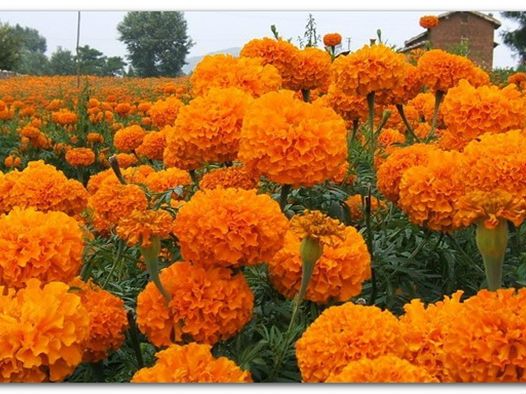
Porophyllums are of the Asteraceae family. It comprises 101 described species. They are native to Central and South America, growing in a range from Texas in the north, Venezuela to the south and Hawaii to the west. Varieties can be found on many of the islands on the eastern borders of the Gulf of Mexico and the Caribbean Sea. Porophyllum ruderale is the main strain of this family; other porophyllums are referred to as sub-species of ruderale. Van Steenis notes that “This American weed was first observed as spontaneously naturalized in the Bogor Botanic Gardens in Singapore in 1945 where it must have been inadvertently introduced, as it was not mentioned in the 1930 Catalogue. It was later entered in the 1963 Catalogue of the gardens under the synonym name P. ellipticum Cass. After the war it spread also to some other places in West Java, e.g. near Tjiandjur. It seems now on the march towards further distribution”.
Some porophyllums are very hardy and are found growing in desert arroyos and on limestone banks in the deserts of New Mexico; on the Kona side of Hawaii Island they can be found growing in lava fields. P.ruderale is classified as an agricultural weed in California.
Although porophyllums are annuals some are considered perennials in their native habitat.
The species are divided into broad leaved and slender leaved varieties.
Broad leaved varieties include P.ruderale, P.coloratum, P.punctatum and P.macrocephalum.
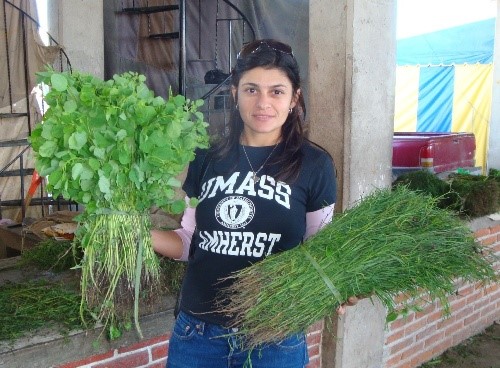
Slender leaved varieties include P.tagetoides, P.gracile and P.linaria
Papalo grows in warm, semi-warm and temperate climates at altitudes of up to 2700 meters above sea level. They prefer to grow in sunny places in well-drained soil but they will tolerate some shade. The plants are considered both drought and frost tolerant when they are established, although in trials performed by the University of Massachusetts the plant was found to be extremely frost sensitive when night time temperatures fell below 40°F (5°C) and though I myself find that 40°C (104°F) Australian summers make the plant wilt, once they are watered they readily spring back to life. It is a hardy plant. P.ruderale in particular seems fond of limestone rich soils.
During the evening hours papaloquelite protects itself from cooler weather by adopting a sleep position. The leaves around the growing shoots change from being horizontal to pointing almost vertically upwards (as is demonstrated in the central plant in the photograph below). By doing this they protect the more sensitive vegetation from losing too much heat. In the early hours of the morning, after sunrise, the leaves move back into their normal position.

Papaloquelite doesn’t usually flower if the growing season is short. This is not a major problem (except if you are a seed saver) as it is the leaves that are used to flavour food.
Flower structure of Porophyllums.
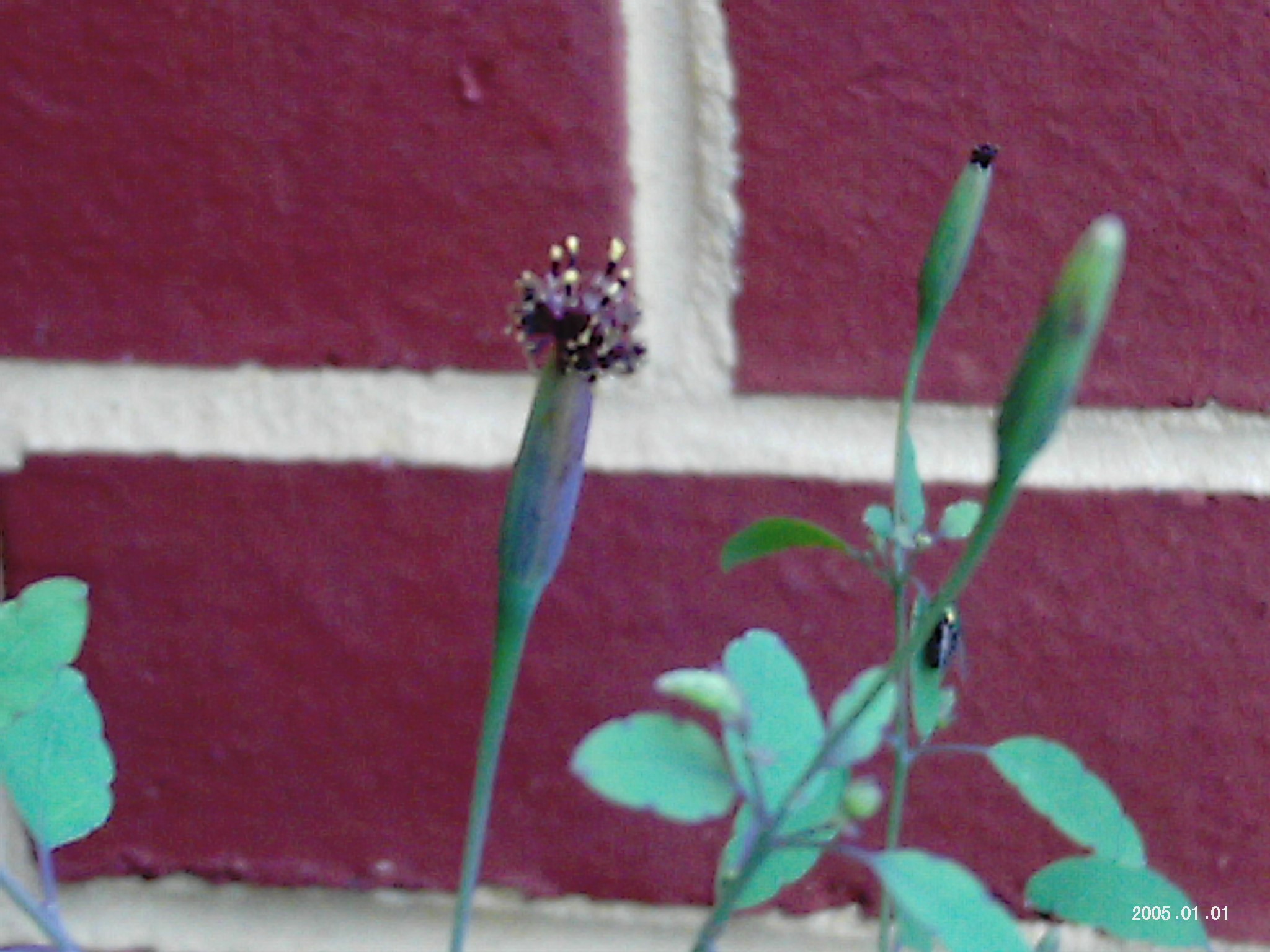
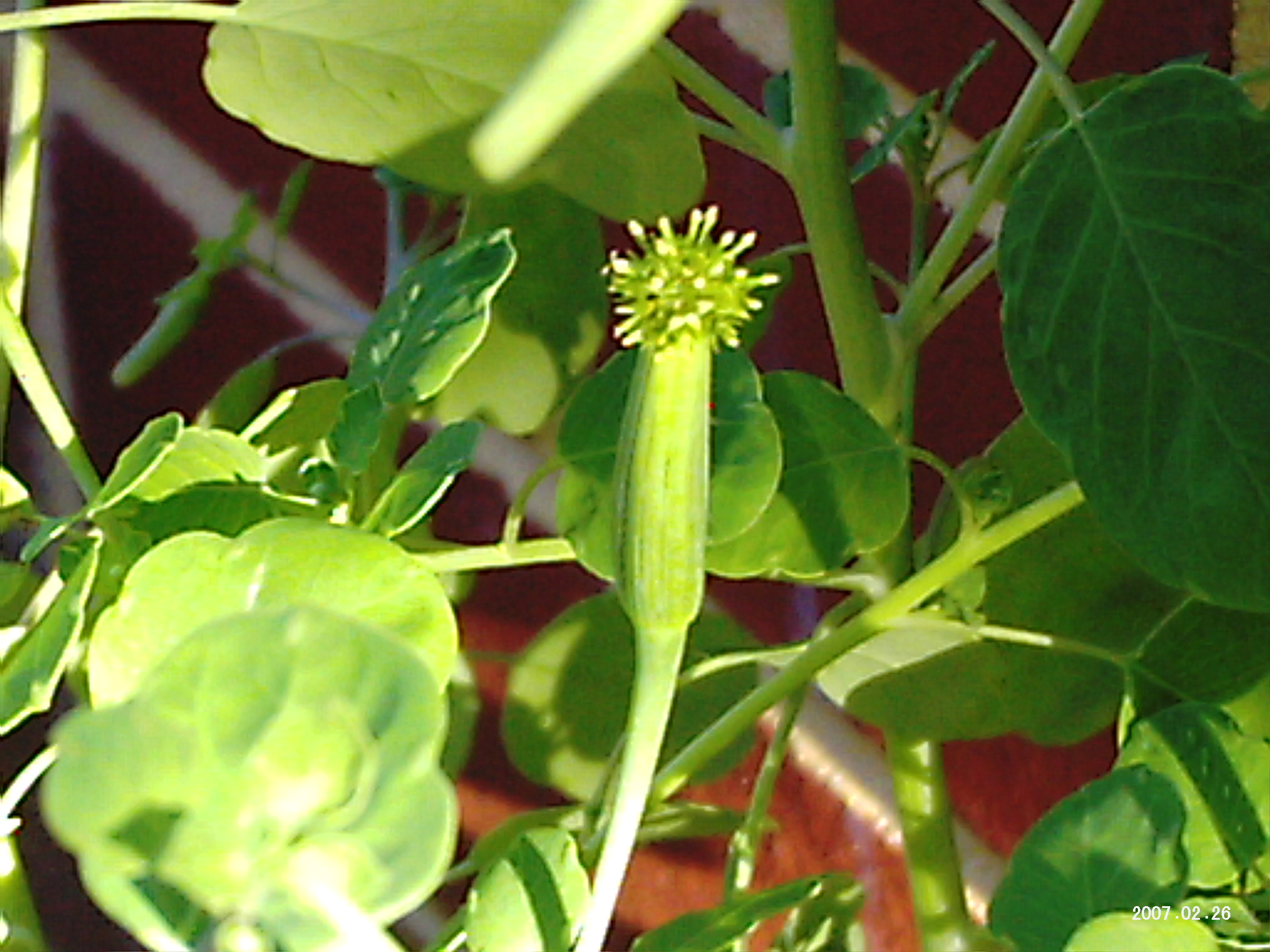
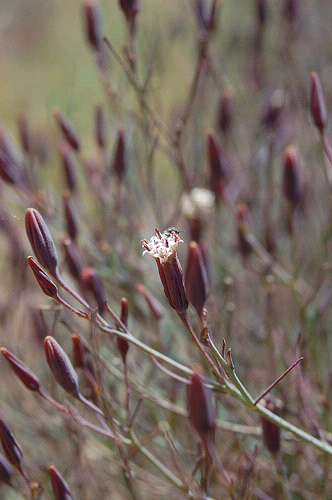
The flowers of porophyllums are cylindrical, approximately 2 – 3 centimetres long and contain up to 50 tiny blossoms.
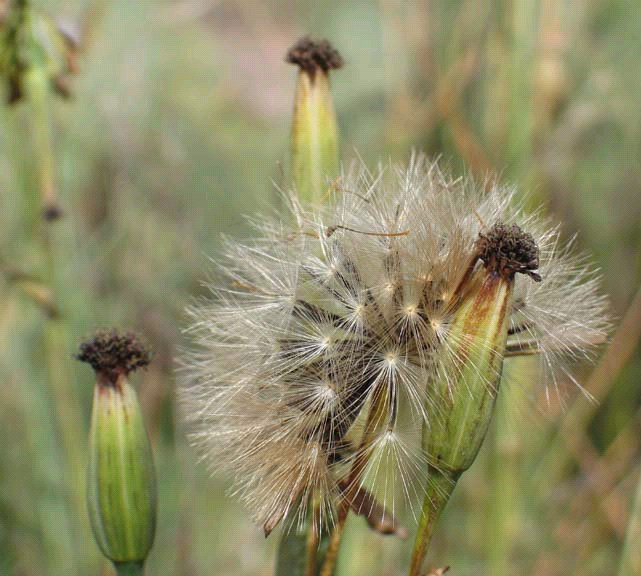
The mature seed heads are fluffy, (have a soft pappus) like that of a dandelion and they can self-seed freely under the right conditions, in a manner similar to a dandelion. It can grow in a wide range of soils and in a warm, non-arid environment it could run the risk of becoming a weed. It has been noted that Papaloquelite grows abundantly in its native habitat and its widespread use in certain areas is due to its availability. An agricultural census in México determined the three main states commercially producing papalo are Guerrero, Morelos and Puebla.
Its weed like tenacity accounts for its survival to the present day from its ancient origins. An article published in 2016 (Estrada etal) has predicted that the distribution of the cultivated varieties of P.macrocephalum is going to increase whilst other cultivated varieties such as P.linaria and wild populations of other varieties are likely to decrease due to the potential effects of severe climate change
The plants differ mainly in leaf shape. They grow to about a metre in height and have an upright multi branching habit. As a coriander substitute these plants are good to have in the garden. They are much easier to grow than coriander which bolts quickly in hot climates..
References
- Codex de la Cruz-Badiano (Badianus Manuscript) Libellus de Medicinalibus Indorum Herbis (“Little Book of the Medicinal Herbs of the Indians”) (also called the Codex Barberini) Nahuatl original composed in the Colegio de Santa Cruz de Tlatelolco in 1552 by Martín de la Cruz and translated into Latin by Juan Badiano
- Gates, William (Translator) (2000) An Aztec Herbal: The Classic Codex of 1552 : an English translation of the Libellus de Medicinalibus Indorum Herbis, published by the Maya Society (1939). Dover Publications, Mineola, New York : ISBN 9780486411309 / 0486411303
- Hernández, Francisco (1959 – 84) Historia natural de Nueva España. 7 Volumes. Universidad Nacional Autónoma de México, México, D.F. Reprint of the work originally published in 1651 in a folio edition and later (1790) published in Madrid in a 3-volume edition with Latinversions of the botanical names.
Websites


Loved your Post. The use of papalo in cleaning products is a brilliant idea. I too love its scent.
LikeLike